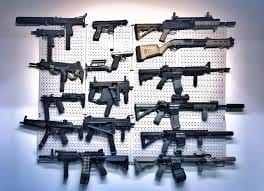by Jason Tarnow | May 12, 2020 | Crime, Criminal Attorney, Legal Aid, Legal Rights, Media, Riots, Social Media
On March 18, 2020, the BC court system responded to the coronavirus pandemic swiftly and without hesitation, reducing operations by the likes of which criminal counsel simply hasn’t seen before. Once it was confirmed how rapidly COVID19 spreads, the crowded confines of publicly accessed courtrooms were immediately deemed inappropriate – dangerous even. Since courtrooms often yield a congregation of some of society’s most vulnerable people, it made perfect sense to act defensively. These decisions, and many others effecting the justice system, were made only one week after the World Health Organization declared a global pandemic on March 11, 2020.
Unfortunately, there was a noticeable absence of urgency when it came time to protect the vulnerable inmate population overcrowded and totally confined within the walls of Mission Institution.
“In the worst-case scenario, CSC will need to order more body bags and find cold storage to stack up the bodies of those whose lives will be lost that could have been saved” – Justin Piche, criminologist, Criminalization and Punishment Project at the University of Ottawa
On March 31, 2020, federal Public Safety Minister Bill Blair recommended that the Correctional Service of Canada (“CSC”) immediately consider the release of non-violent inmates to mitigate the unavoidable reality that the virus could, and would, devastate the wellbeing of prison populations. His recommendation came on the heels of the CSC announcing the first two positive COVID-19 cases in federal institutions in Quebec.

On April 4, 2020, the CSC announced 4 confirmed cases at Mission Institution, leading to a lockdown of the facility.
By April 8, 2020, there were 11 confirmed cases, all inmates. Nearly one month had passed since the WHO declared a global pandemic.
By April 18, 60 inmates and 10 staff tested positive, and the CSC marked its first coronavirus related inmate death, exactly one month after the courts effectively shut down.
By April 25, 2020, 106 inmates and 12 correctional officers were confirmed to be infected, representing the largest outbreak in the Canadian Correctional System. On this date, the CSC advised that all inmates at Mission Medium Institution had been tested, but in any event, new cases were continuing to be discovered.
While disturbing, none of these developments are surprising. The largest incidence of outbreaks has been at long-term care homes – combining close quarters, limited mobility, and care-workers employed at more than one facility is a recipe for disaster when it comes to COVID-19, a pathogen that spreads and infects without discrimination. The same vulnerabilities exist within the correctional system, where they are intensified. Inmates and corrections staff are simply unable to practice crucial social distancing. Personal protective equipment for inmates has not been prioritized as it has in other sectors, despite these individuals being at a much higher risk of getting sick.

The CSC responded to COVID-19 by prohibiting visits to inmates, temporary absences, work releases, and inmate transfers between correctional facilities. While these steps likely helped to curb the spread of the virus, as a whole, they are grossly inadequate. Without a vaccine, social distancing remains our greatest defence against the virus. For the inmates at Mission Institution and those incarcerated at facilities across Canada, proper protective equipment is hard to come by, but hope is even harder.
by Jason Tarnow | May 5, 2020 | Crime, Legal Rights, Media, Police, Social Media, Wheels Of Justice
On April 18 and 19 2020, Gabriel Wortman was solely responsible for the largest mass shooting in Canadian history, which claimed the lives of 22 innocent people including veteran RCMP Cst. Heidi Stevenson. Wortman, a 51 year old denturist, went on a rampage in Portapique, Nova Scotia using firearms that police suspect were obtained illegally, likely from the United States. Eventually he was cornered at a gas station and died in a shootout with police.
Just shy of two weeks later, Prime Minister Justin Trudeau announced a ban on approximately 1,500 different models of military grade assault-style weapons. The announcement came as a surprise to no one – back in 2015, the Liberal government campaigned on promises to address gun violence. In addition to banning assault-style weapons, the Liberal government vowed to implement a buy-back program for prohibited firearms, establish red-flag legislation, impose tighter restrictions for proper storage of firearms and licensing, and to grant municipalities the power to ban handguns.
Trudeau’s announcement has sparked outrage among gun owners and enthusiasts, although overall most Canadians are in favour of stricter regulations regarding firearm ownership.

It’s important to understand what the ban actually applies to. It prohibits the sale, transport, import and use of semi-automatic weapons – Ruger Mini-14, M14 semi-automatic, Beretta CX4 Storm, and CSA-VZ-58 to name a few. Fully automatic weapons are already banned in Canada. Semi-automatic firearms were previously classified as either restricted or non-restricted, and will now be classified as prohibited.
So what do you do if you already have these in your possession? That depends.
Due to their classification as prohibited weapons, effected firearms will essentially become useless. In any event, gun owners will not be forced to relinquish them – but they will be provided with an incentive to do so. Though unclear at this point, the Canadian Government will be implementing a “buy back” program for all applicable firearms – aka, you’ll be paid to turn them over. For gun owners wishing to retain their firearms, there will be an option to be “grandfathered” into ownership. Certain terms and restrictions will apply, and will likely turn these weapons into collector’s items.
Unlike in the United States, our Charter does not include a constitutional right to bear arms

For those who choose to do nothing and simply retain their weapons, the consequences could be severe. Being found in possession of a prohibited firearm comes with the potential of spending years behind bars and a criminal record that could negatively impact employment and traveling prospects for life. The Canadian Government has instituted an amnesty period (waiting period) to allow for gun owners to consider their options. In any event, all gun owners must be in compliance, one way or another, by April 2022.
Though there is definitely a tight-knit community of lawful and responsible gun owners in Canada, the point of the ban is to limit access of tactical weapons among Canadians. Unlike in the United States, our Charter does not include a constitutional right to bear arms – so you can be sure that tighter regulations are on the horizon.
by Jason Tarnow | Apr 10, 2018 | Crime, Criminal Attorney, Legal Rights, Police, Wheels Of Justice
 On March 29, 2018, Bill C-75 had its first reading in the House of Commons, and upon publication, was quick to receive scrutiny from lawyers across the country.
On March 29, 2018, Bill C-75 had its first reading in the House of Commons, and upon publication, was quick to receive scrutiny from lawyers across the country.
The Bill seeks to amend provisions of several key pieces of legislation, including the Criminal Code and the Youth Criminal Justice Act. However, in doing so, many rights currently afforded to an Accused will become a thing of the past.
The first major concern that stands out is the proposal to abolish the use of peremptory challenges in the jury selection process. When jurors are being selected, an Accused person and his Defence counsel are afforded 12 of these challenges, permitting them to deny a juror without explanation. Crown Counsel also has 12 challenges for their own use. The purpose of peremptory challenges is to provide balance in the adversarial trial process – however, the motivation behind their use differs depending on who you ask. The Bill doesn’t elaborate on how jury selection will be managed without peremptory challenges.
Equally alarming is the proposal to deny Preliminary Hearings for offences that don’t carry a maximum term of life imprisonment upon conviction. It is also being suggested that Justices be given power to limit issues examined and witnesses called during a Prelim. The Preliminary Hearing’s purpose is to determine whether the Crown has enough evidence to commit an Accused person to stand Trial, a valuable tool for the Defence in any given case (even if the offence doesn’t carry a potential life sentence). However, it isn’t beneficial only to the Accused. The evidence heard at a Preliminary Hearing is transcribed, to be recalled upon by parties at Trial. The issues explored at the Prelim can assist in narrowing what issues will be raised at trial, which in return reduces the likelihood of wasted court time on irrelevant issues (especially important in consideration of the impact of delay!). With the ability to seek a Direct Indictment from the Attorney General, the proposal to limit Prelims is wholly unnecessary.
Next up, and not surprisingly, we see this Bill seek to increase punitive measures for Accused persons facing allegations of abuse against an intimate partner. These consequences begin prior to any finding of guilt – in fact, they begin at the onset of proceedings, when an Accused person seeks release on bail. Bill C-75 suggests more “onerous interim release requirements” for individuals facing allegations relating to violence against an intimate partner. This essentially means that the terms of release will be increasingly stringent. On that note, the Bill also proposes to increase the maximum term of imprisonment for repeat intimate abuse offenders, and to have violence against a partner considered an aggravating factor at
sentencing.

Perhaps most disturbing is the revision relating to police powers and written evidence in the form of an Affidavit. Currently, a police officer is required to attend a trial in person to give oral evidence regarding their involvement in the case. They are subjected to cross-examination on that involvement, at which time they must truthfully answer questions posed by the Defence. This is a crucial opportunity for the Defence to raise reasonable doubt (when considering that police officers often offer the most compelling and credible evidence) which is the only reason for taking a matter to trial. Of course, the Defence will still be allowed to apply to cross-examine a police officer on their written evidence – but that application requires additional court time, and one struggles to believe that such an application would be denied in any event. So this proposed amendment will likely result in additional delay and squandered court time.
Many of these amendments strike at the heart of the adversarial process, and an Accused’s person’s right to make full answer and Defence to the charges against them. Numerous changes are procedural, justified by the assertion that too many cases are being thrown out over judicial delay. Systemic flaws, a lack of inquiry and input by judicial staff, and failure to accept and validate the concerns of concerned legal professionals in the private sector are a few of the factors that have resulted in impractical proposals pushed forward in Bill C-75.
by Jason Tarnow | Sep 29, 2017 | Crime, Legal Aid, Legal Rights, Police, Politics, Social Media, Wheels Of Justice
Impaired operation of a vehicle/vessel is illegal in British Columbia, the Yukon Territory, and really, across our entire nation. However, you may be surprised to learn that police agencies haven’t always exercised their discretion when determining what constitutes a “vessel”. We all know it is against the law to drive your motor vehicle while under the influence of alcohol, and common sense dictates that this also applies to motorcycles, and motorized boats – but did you know that it is (apparently) just as unlawful to knock back a few and go for a ride in your canoe?
Yes, the word “vessel” does not limit illegality to motorized methods of passage. Police agencies across Canada have been known to charge individuals for tipsy transport via canoe.
If you make the smart choice to ride your bicycle to/from the bar, and your swerving attracts the attention of police, you might be ticketed with public intoxication – but not impaired driving.
If you get caught canoeing down the Fraser River, you could potentially be charged with impaired operation of a vehicle/vessel – and if convicted, you would likely lose your driver’s license.
Even though you don’t need a license to operate a canoe, it probably isn’t smart to be drunk on the water. While you’re unlikely to harm anyone else, open water and alcohol don’t mix very well. You could end up paying big penalties for impaired operation of a canoe, the highest of which would be your life if you happen to fall overboard.
But, if you don’t heed my advice & find yourself being breathalyzed canoe-side – “thar she blows…. over .08”, contact our office to discuss your options.
We are conveniently located in Richmond, B.C. only a few steps away from Brighouse Station on the Canada Line, which brings you from various locations in Metro Vancouver in 20 minutes. We service all areas of the lower mainland (including but not limited to Surrey, New Westminster, Port Coquitlam, North Vancouver, and Abbotsford) the interior of B.C. (including but not limited to Cranbrook, Kelowna, Kamloops, and Salmon Arm), Northern B.C. (including but not limited to Prince George, Prince Rupert, and Quesnel) and in the Yukon Territory where we offer services in Whitehorse, Dawson City, and Old Crow. Contact our office today for your initial consultation.
by Jason Tarnow | Jul 24, 2017 | Crime, Legal Rights, Police, Social Media, Wheels Of Justice


The Vancouver Police Department announced that it will be using a new form of intelligence to stop crime before it happens.
No, it isn’t the formation of the Psychic Task Force. It isn’t any sort of “Big Brother” surveillance method (I think) – rather, the VPD has declared it will be the first law enforcement agency in Canada to utilize a “crime prediction model” that will tip officers off to property-crime offences before they happen.
Unsurprisingly, the public has been given very little information about what this new tool is able to do. So far, all we have been told is that it is a computerized program that was apparently very successful in its 6 month pilot project.
The program identifies both residential and commercial areas that display a high-likelihood for property crime. Surveillance areas are set up within a 100-500 meter perimeter, and officers are then dispatched to those areas for visible public presence.
The presence of police, of course, acts as a deterrent for thieves and vandals.
Interestingly enough, this comes as a further development to the 2015 crime mapping tool developed by the VPD. This interactive map is available to the public, for use by anyone interested in learning more about which areas in Vancouver are deemed higher risk. While many people attribute
While this may seem like a weak method of combatting serious and ongoing theft and vandalism, preventative measures are only deemed necessary once an issue has spiralled out of control.
Charges that police hope to see a reduction in as a result of this new preventative measure:
- Break and Enter
- Break and Enter to commit an Indictable offence
- Theft under $5,000
- Theft over $5,000
- Mischief
- Possession of stolen property
It isn’t unusual to see “petty” crimes, such as minor theft, escalate into more serious situations that can include violent offences as well – for example, a man breaks into a vehicle looking for valuables, but the owner of the vehicle happens to come down to his car as the crime is in progress. An altercation ensues, police attend, and the charges include break & enter, theft, AND assault. By preventing the theft, the entire situation could have been avoided.
Ideally, this tool will aid police in preventing some crimes from happening, but realistically, crimes will still occur in the areas that aren’t padded by police presence.
We are conveniently located in Richmond, B.C. only a few steps away from Brighouse Station on the Canada Line, which brings you from various locations in Metro Vancouver in 20 minutes. We service all areas of the lower mainland (including but not limited to Surrey, New Westminster, Port Coquitlam, North Vancouver, and Abbotsford) the interior of B.C. (including but not limited to Cranbrook, Kelowna, Kamloops, and Salmon Arm), Northern B.C. (including but not limited to Prince George, Prince Rupert, and Quesnel) and in the Yukon Territory where we offer services in Whitehorse, Dawson City, and Old Crow. Contact our office today for your initial consultation.





 On March 29, 2018,
On March 29, 2018, 

